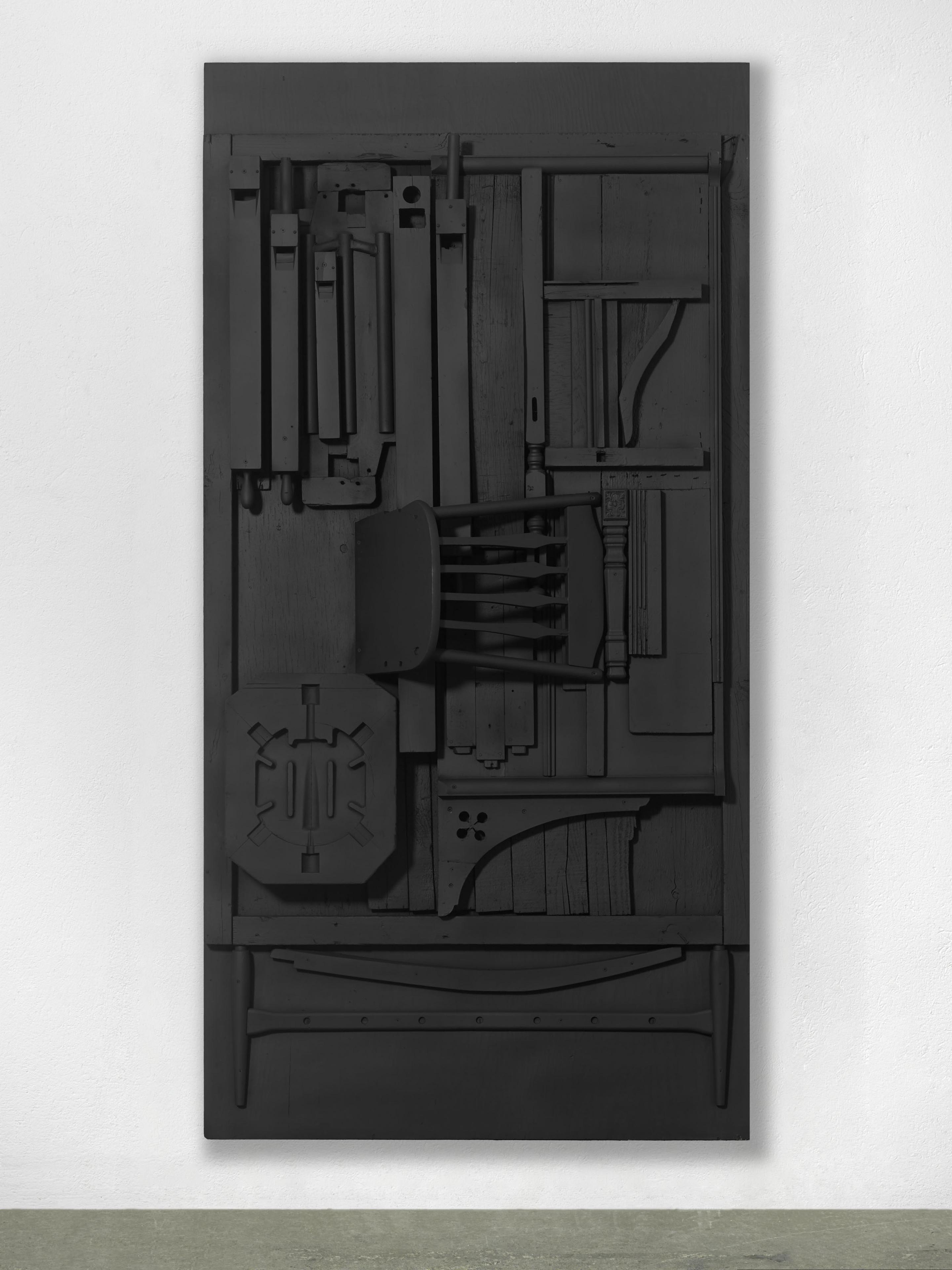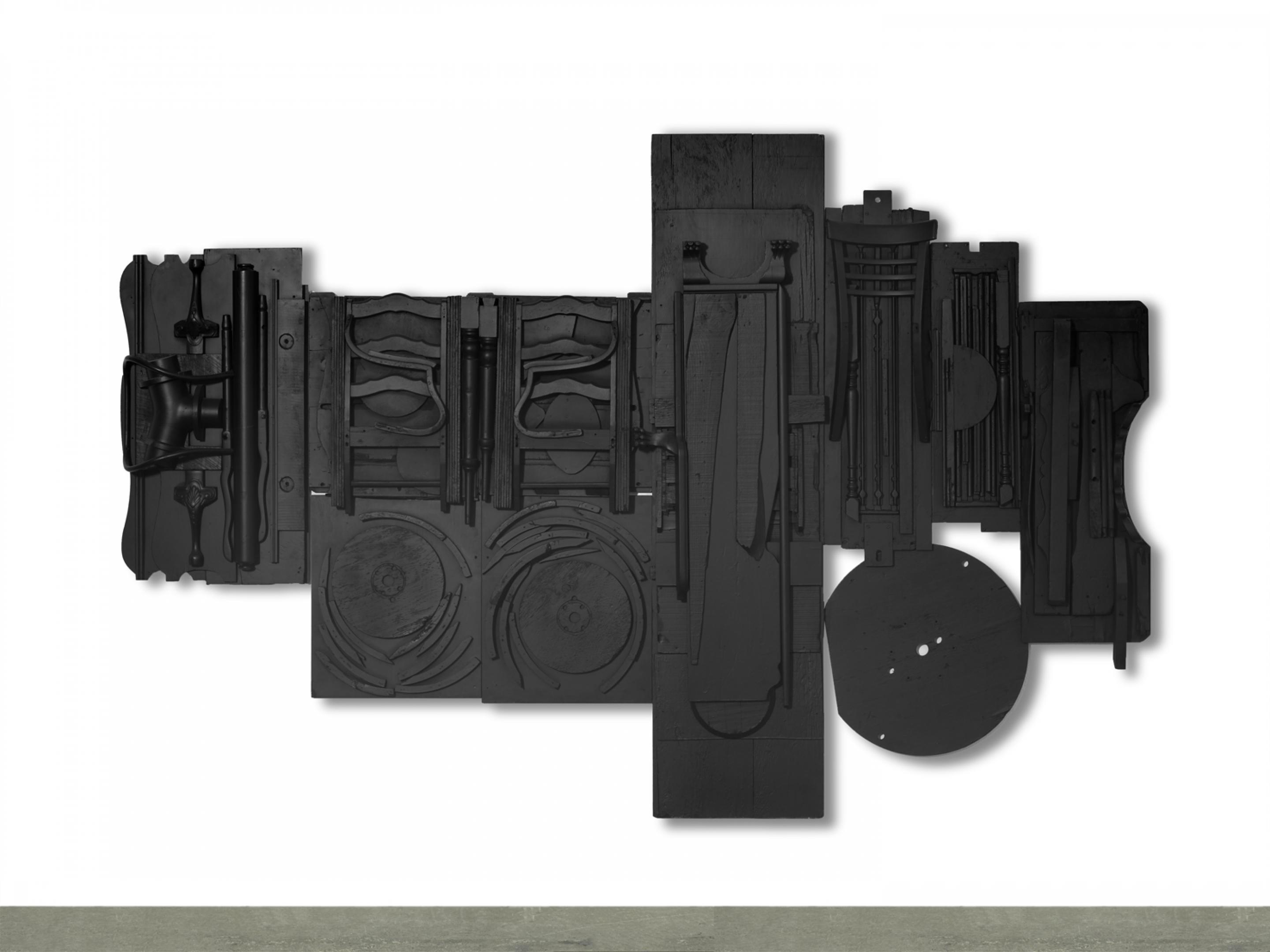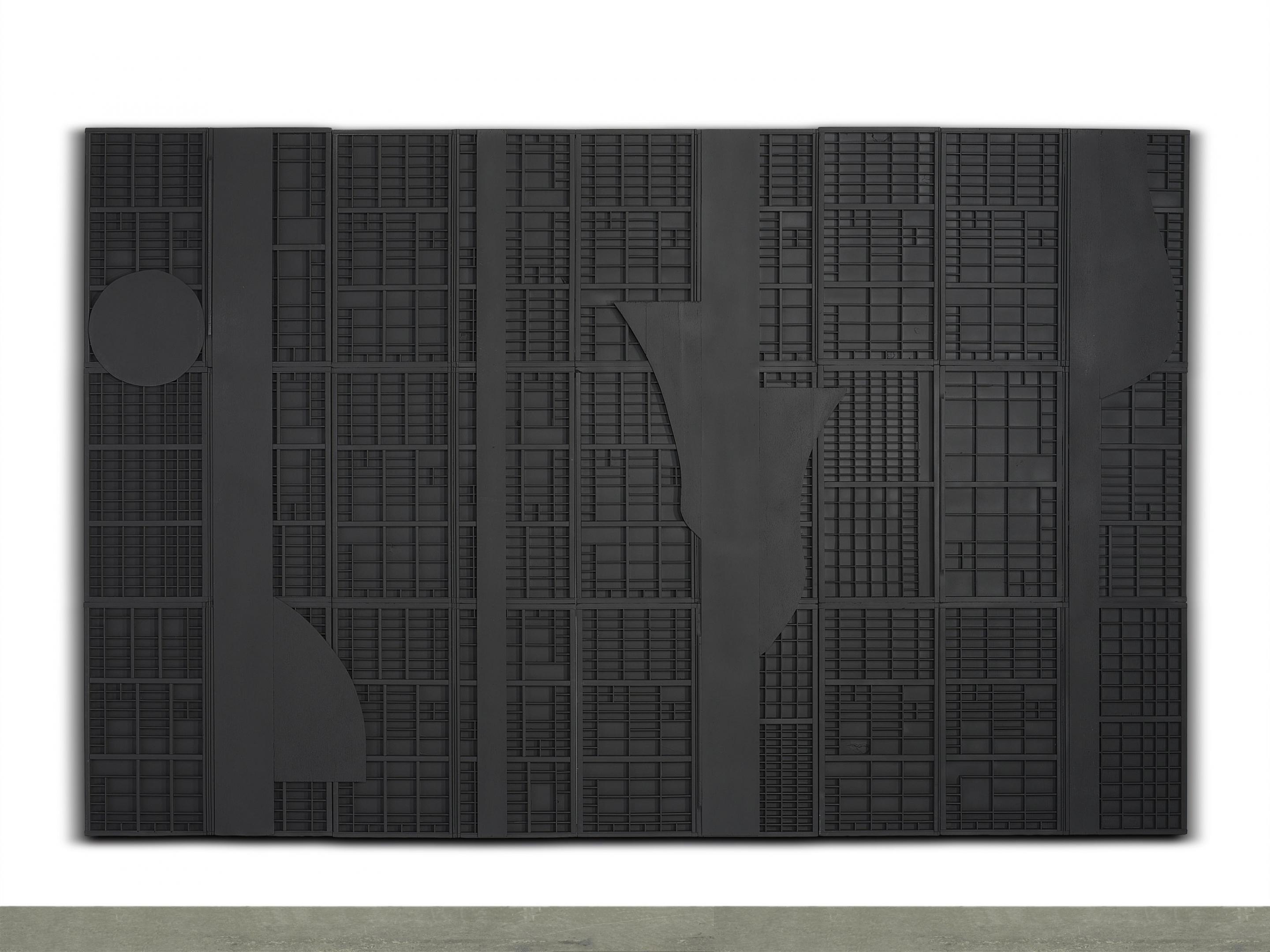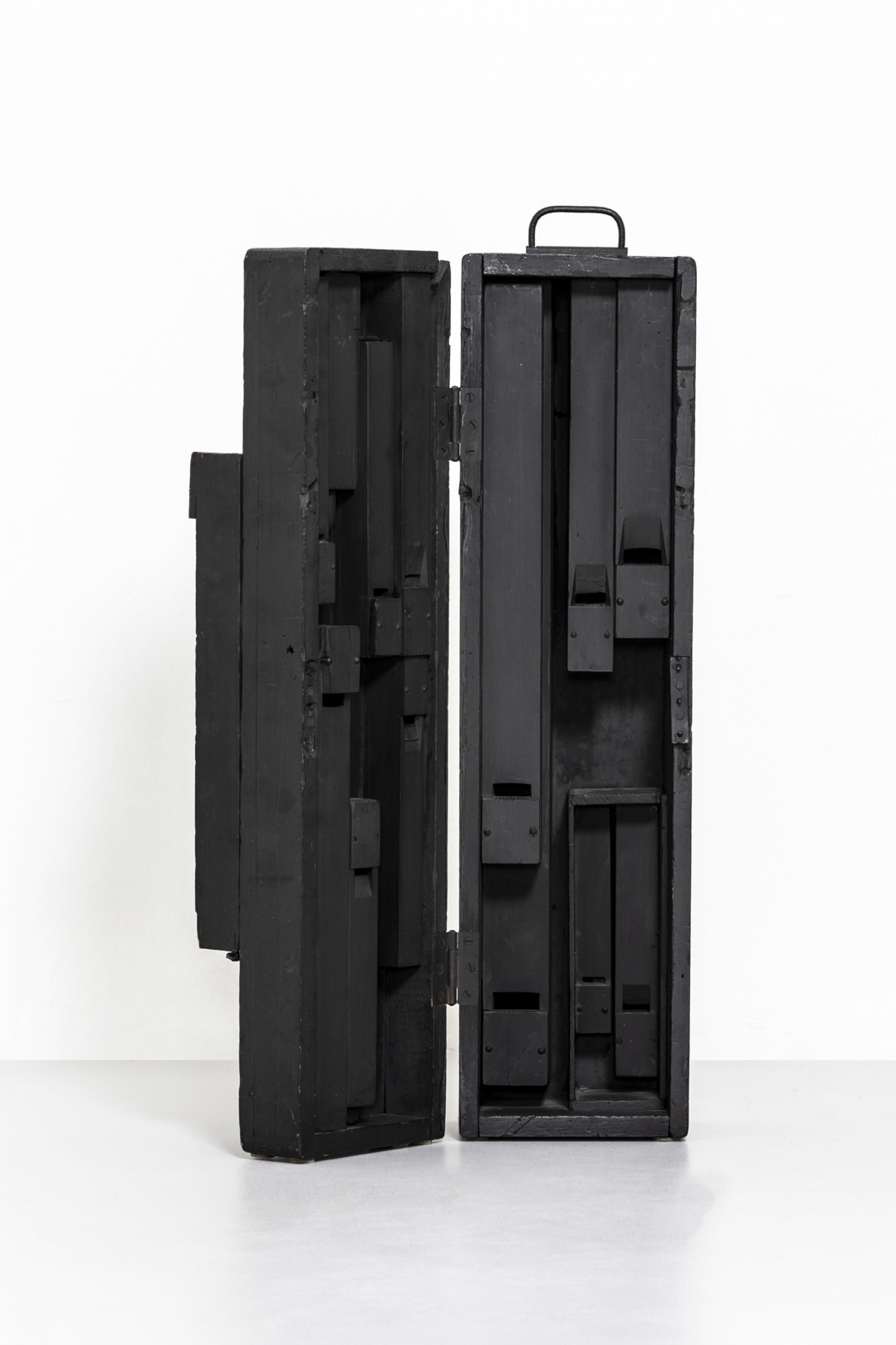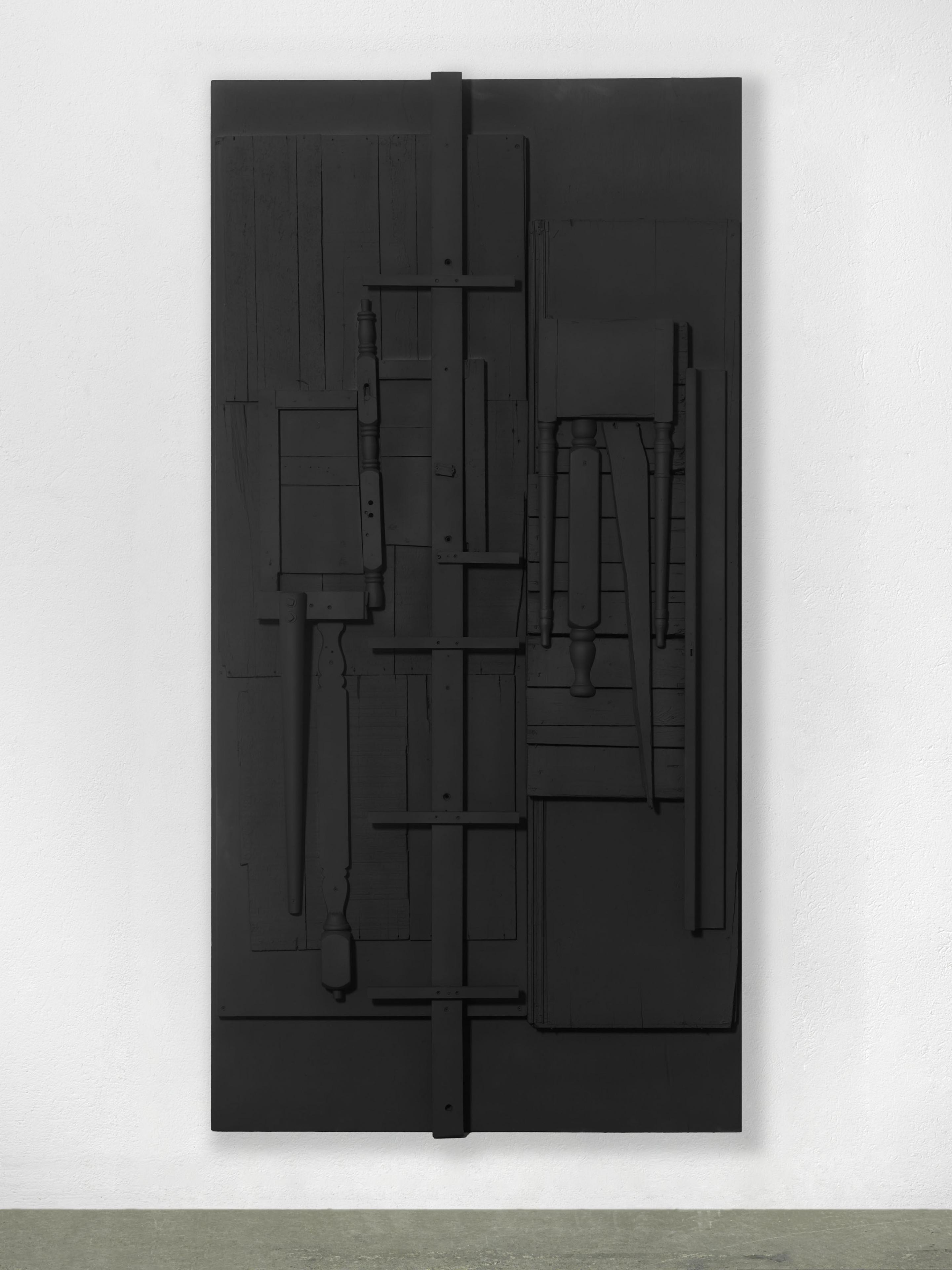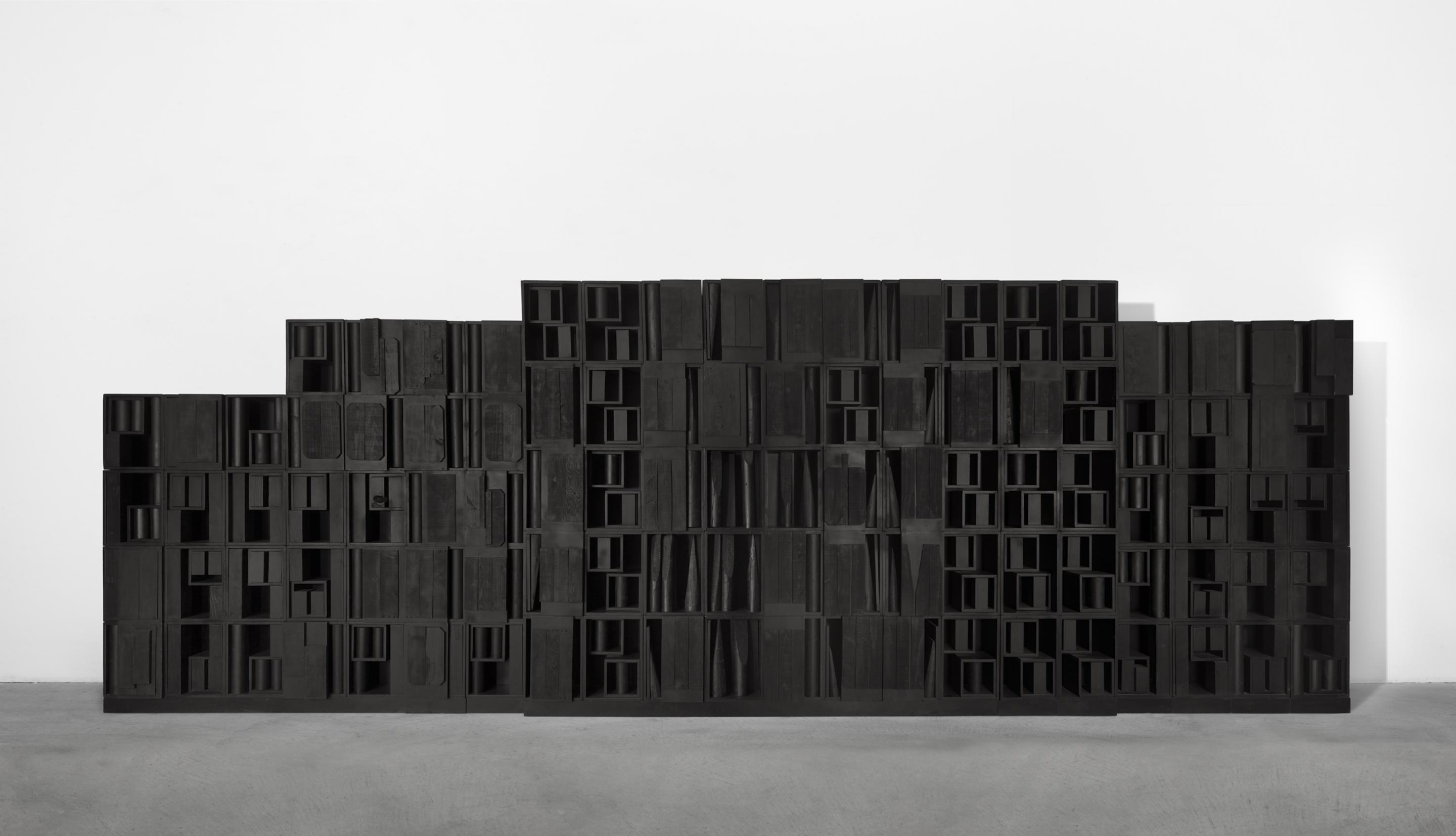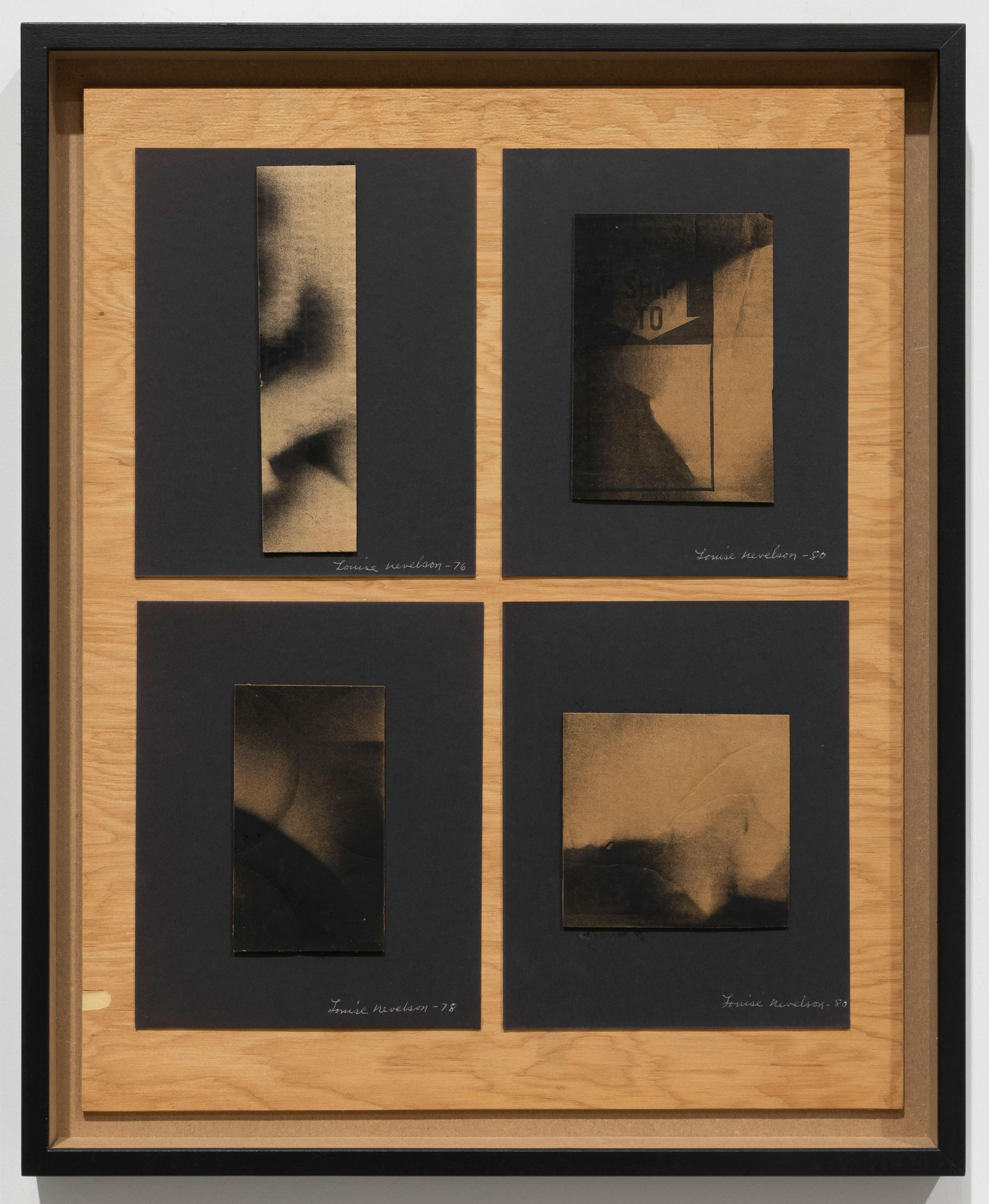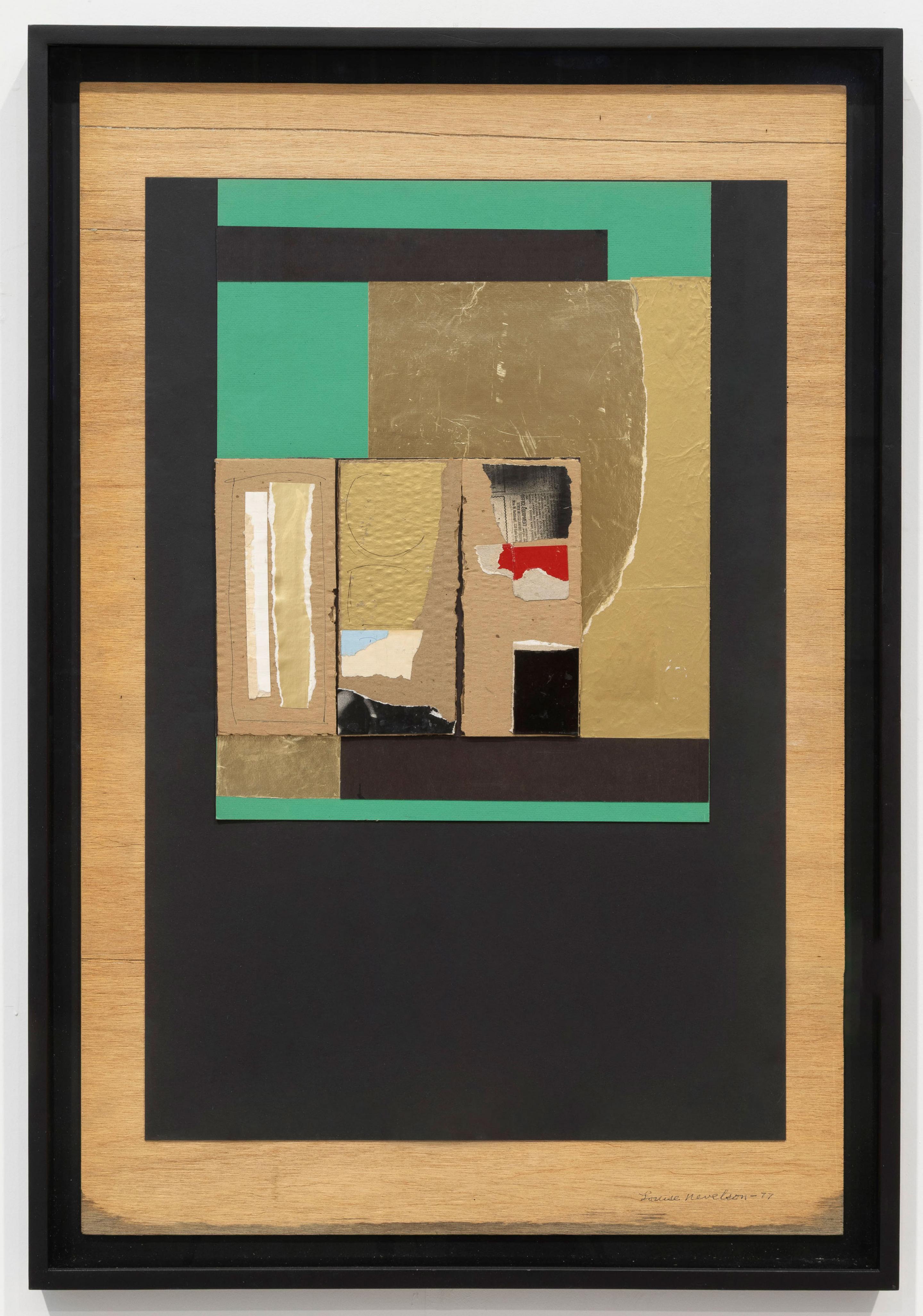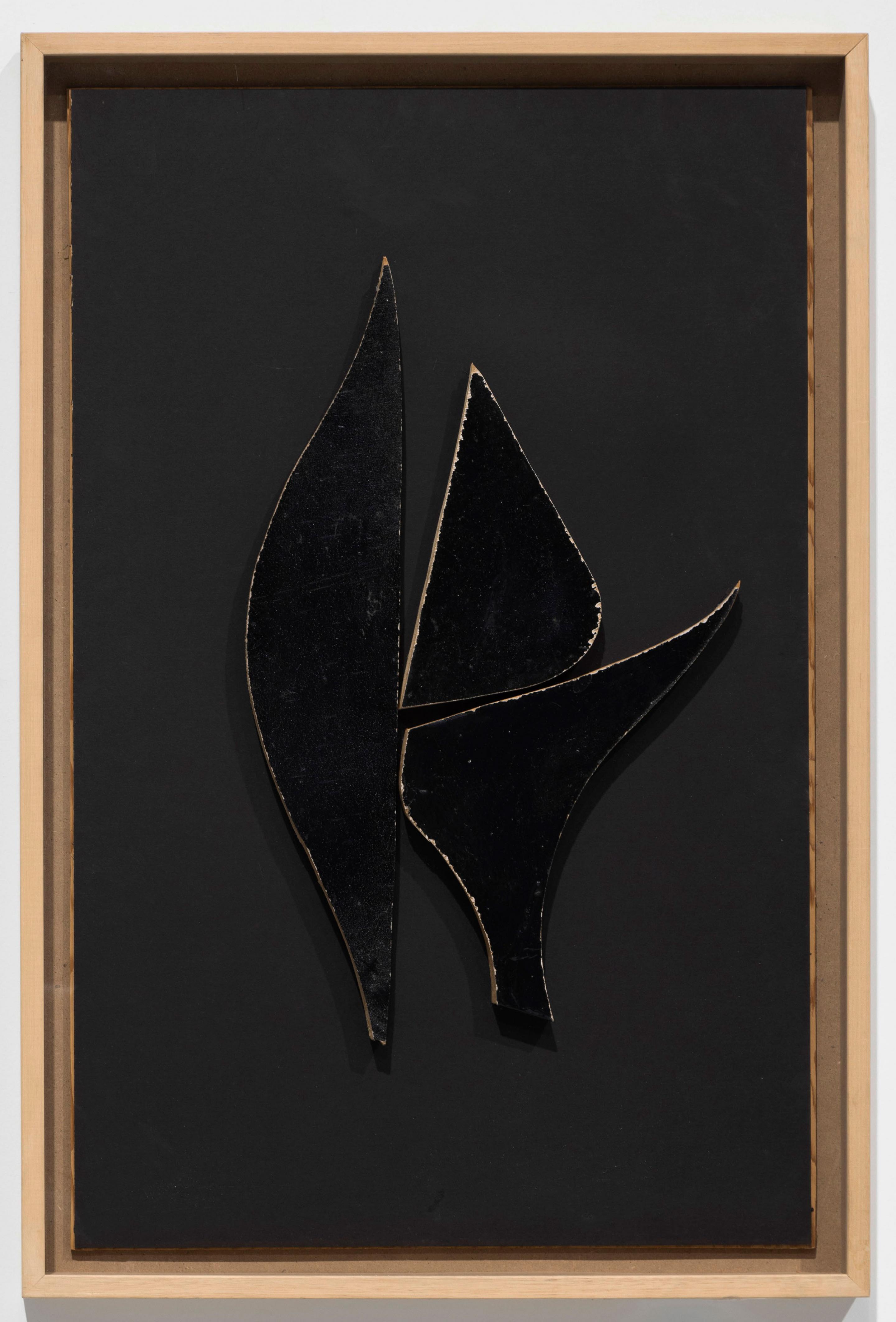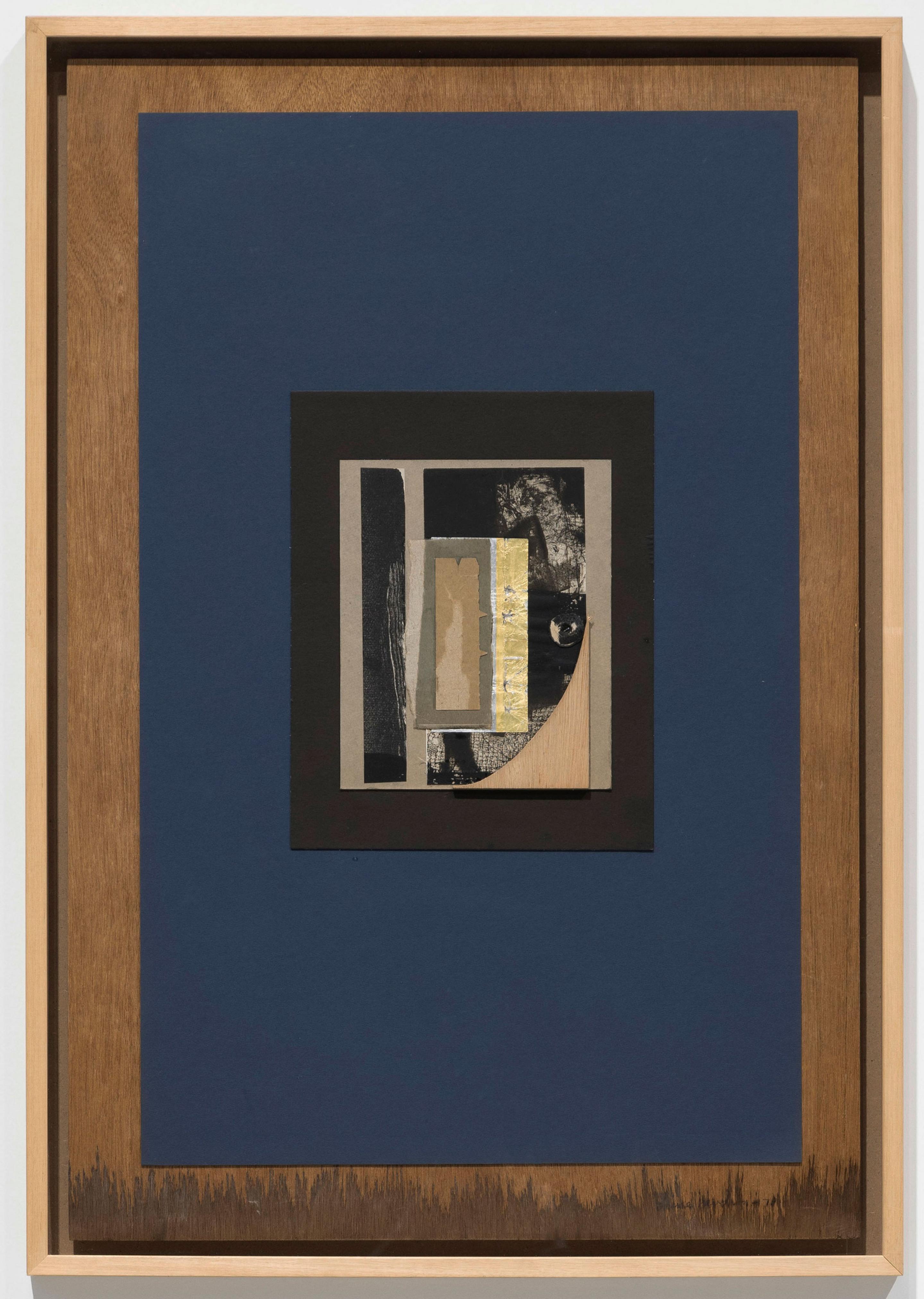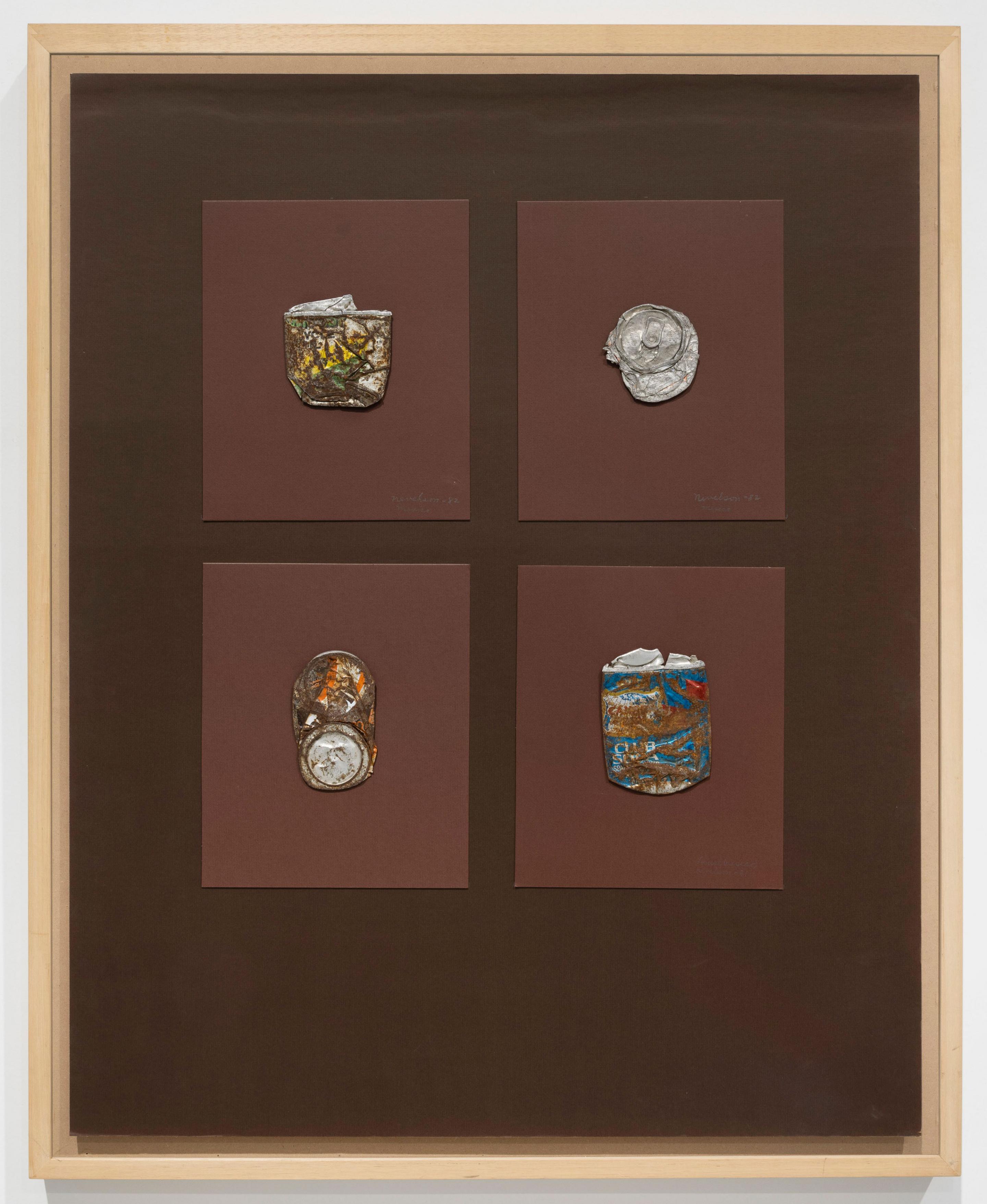LouiseNEVELSON
About
Louise Nevelson was a leading American sculptor known for her monochromatic, monumental, wooden wall pieces, outdoor sculptures and collages. She was one of the most important figures in 20th-century American sculpture who was regarded not only for her groundbreaking sculptural environments and public commissions in major American cities but also for her flamboyant persona, which was captured in memorable photos by Cecil Beaton.
Louise Nevelson was born near Kiev in 1899 and emigrated to the United States at the age of six. She spent her childhood in Rockland, Maine and at a young age left her parental, Yiddish-speaking home for New York City, where she studied drama and later enrolled at the Art Students League. Throughout the early 1930s, Nevelson travelled across Europe and briefly attended Hans Hofmann’s school in Munich, returning to New York in 1932 where she studied once again with Hofmann. Upon her return to the United States, Nevelson met Diego Rivera and became his studio assistant.
In the later 1930s, Nevelson, like many American visual artists, benefited from the WPA programme set up by the Roosevelt administration. This was an opportunity for her to exhibit, teach and work free of financial anxiety and to familiarise herself with the idea of sculpture production, thanks to state-subsidised workshops.
Nevelson participated in several group shows throughout the 1930s, the first of which was organized by the Secession Gallery and held at the Brooklyn Museum in 1935.
Eight years later, Peggy Guggenheim included Nevelson’s work in her Exhibition by 31 Women.
In 1941, Nevelson had her first one-person exhibition at the Nierendorf Gallery in New York where she remained for several years in order to then join Martha Jackson Gallery. At the latter's gallery, Nevelson consolidated her future trademark: sculptures produced from recycled scraps of wood, assembled and painted black, which helped make her one of the pioneers of the environment.
The 1940s were a decade punctuated by travels to Europe, explorations in printmaking, and work at the Sculpture Center in New York.
By the late 1940s and early 1950s, Nevelson had traveled to Mexico and Guatemala to view Pre Colombian art and began to produce a series of wood landscape sculptures. Besides Surrealism, Picasso’s Cubism and Tatlin’s Constructivism, Nevelson was particularly intrigued by native North and Central American art.
An interest in space and shadow materialized in her first all-black sculptures, introducing a visual language that came to characterize much of her work from the mid-1950s onward.
Nevelson produced her assemblages and collages in connection with her sculptures. The latter are usually created out of wood and range from smaller assemblages to free-standing stelae and monumental wall-mounted works consisting of multiple box-like compartments. These box-like structures are comprised of discarded furniture and other wood elements found in the area surrounding her studio.
A unique feature of Nevelson's works is that they are often painted in monochromatic white, gold and especially black, which for the artist was the "color of all colors": “… when I fell in love with black, it contained all color. It wasn’t a negation of color. It was an acceptance. Because black encompasses all colors. Black is the most aristocratic color of all. (…) You can be quiet and it contains the whole thing. There is no color that will give you the feeling of totality. Of peace. Of greatness. Of quietness. Of excitement. I have seen things that were transformed into black, that took on just greatness. I don’t know a lesser word.”
Acquisitions by three major New York museums in the later 1950s encouraged Nevelson’s artistic development: In 1956, the Whitney Museum of American Art acquired Black Majesty (1955) and one year later the Brooklyn Museum followed suit with the acquisition of First Personage (1956). Shortly after, the Museum of Modern Art acquired Sky Cathedral (1958), further championing Nevelson’s work with her inclusion in the seminal group exhibition Sixteen Americans (1959–60). In this iconic exhibition the large-scale installation Dawn’s Wedding Feast (1959) by the 60-year old Nevelson was shown alongside rising stars such as Jasper Johns, Robert Rauschenberg and Frank Stella.
In 1962, Nevelson represented the United States at the 31st Venice Biennale. Her work was also included in the 1976 edition of the Biennale and in Documenta 3 and 4 in 1964 and 1968.
After a brief stint at Sidney Janis Gallery, Nevelson joined The Pace Gallery in 1963.
The Whitney Museum in New York organized a major retrospective of her work in 1967 and two years later she had her first solo show in an Italian institution, the Galleria Civica d’Arte Moderna in Turin.
In 1973, Studio Marconi in Milan hosted its first Louise Nevelson solo exhibition which subsequently traveled to five European institutions, among them the Moderna Museet in Stockholm and the Neue Nationalgalerie in Berlin.
In the late 1970s, she created monumental works such as the sculptural environment Chapel of the Good Shepherd in New York (1977) and the wall sculpture Sky Gate, New York for the World Trade Center in Manhattan's Financial District (1978).
On April 17, 1988, Louise Nevelson died in New York.
Nevelson has been the subject of numerous exhibitions all over the world, earning significant critical recognition and several awards.
In 2007 the Jewish Museum in New York honoured the artist with its Constructing a Legend exhibition. 10 years later, the Moderna Museet in Stockholm showcased both her collages and sculptures from the 1950s to the 1970s.
In 2018, the exhibition The Face in the Moon was mounted at the Whitney Museum of American Art in New York, focusing on her work in drawing, collage and printing and spanning her progression from the human body into abstraction.
In 2020, the Kunsten Museum of Modern Art in Aalborg, Denmark held the solo exhibition Louise Nevelson – Sculptor of Shadows.
One of her largest installations, the almost 9 meter long Homage to the Universe (1968), was showcased in the 59th Venice Biennale's The Milk of Dreams exhibition in 2022.
That same year, Louise Nevelson. Persistence was presented at the Procuratie Vecchie in Venice.
In 2025, the Whitney Museum of American Art in New York presented Collection View: Louise Nevelson on its 5th floor exhibition space.
Two major Nevelson retrospectives will take place in the Museum Wiesbaden in Germany and the Centre Pompidou-Metz in France in the fall of 2025 and the beginning of 2026.
Many of the most prominent museums and public collections in the world hold work by Louise Nevelson, among them are the: Museum of Modern Art, New York; Metropolitan Museum, New York; Solomon R. Guggenheim Museum, New York; Whitney Museum of American Art, New York; Art Institute of Chicago; Museum of Contemporary Art, Chicago; Carnegie Museum of Art, Pittsburgh; Hirshhorn Museum and Sculpture Garden, Washington D.C.; Walker Art Center, Minneapolis; LACMA, Los Angeles; San Francisco Museum of Modern Art; Museum Ludwig, Cologne; Städel Museum, Frankfurt; Galleria Civica d'Arte Moderna e Contemporanea, Turin; Louisiana Museum of Modern Art, Humlebaek; Moderna Museet, Stockholm; Centre Pompidou, Paris; Tate Gallery, London; Museum Boijmans van Beuningen, Rotterdam.
Additionally, the artist’s work is permanently installed at several sculpture centers, museums and universities across the United States. Public sculptures by Louise Nevelson are in the cities of New York, Chicago, San Francisco and Los Angeles.
Louise Nevelson was born near Kiev in 1899 and emigrated to the United States at the age of six. She spent her childhood in Rockland, Maine and at a young age left her parental, Yiddish-speaking home for New York City, where she studied drama and later enrolled at the Art Students League. Throughout the early 1930s, Nevelson travelled across Europe and briefly attended Hans Hofmann’s school in Munich, returning to New York in 1932 where she studied once again with Hofmann. Upon her return to the United States, Nevelson met Diego Rivera and became his studio assistant.
In the later 1930s, Nevelson, like many American visual artists, benefited from the WPA programme set up by the Roosevelt administration. This was an opportunity for her to exhibit, teach and work free of financial anxiety and to familiarise herself with the idea of sculpture production, thanks to state-subsidised workshops.
Nevelson participated in several group shows throughout the 1930s, the first of which was organized by the Secession Gallery and held at the Brooklyn Museum in 1935.
Eight years later, Peggy Guggenheim included Nevelson’s work in her Exhibition by 31 Women.
In 1941, Nevelson had her first one-person exhibition at the Nierendorf Gallery in New York where she remained for several years in order to then join Martha Jackson Gallery. At the latter's gallery, Nevelson consolidated her future trademark: sculptures produced from recycled scraps of wood, assembled and painted black, which helped make her one of the pioneers of the environment.
The 1940s were a decade punctuated by travels to Europe, explorations in printmaking, and work at the Sculpture Center in New York.
By the late 1940s and early 1950s, Nevelson had traveled to Mexico and Guatemala to view Pre Colombian art and began to produce a series of wood landscape sculptures. Besides Surrealism, Picasso’s Cubism and Tatlin’s Constructivism, Nevelson was particularly intrigued by native North and Central American art.
An interest in space and shadow materialized in her first all-black sculptures, introducing a visual language that came to characterize much of her work from the mid-1950s onward.
Nevelson produced her assemblages and collages in connection with her sculptures. The latter are usually created out of wood and range from smaller assemblages to free-standing stelae and monumental wall-mounted works consisting of multiple box-like compartments. These box-like structures are comprised of discarded furniture and other wood elements found in the area surrounding her studio.
A unique feature of Nevelson's works is that they are often painted in monochromatic white, gold and especially black, which for the artist was the "color of all colors": “… when I fell in love with black, it contained all color. It wasn’t a negation of color. It was an acceptance. Because black encompasses all colors. Black is the most aristocratic color of all. (…) You can be quiet and it contains the whole thing. There is no color that will give you the feeling of totality. Of peace. Of greatness. Of quietness. Of excitement. I have seen things that were transformed into black, that took on just greatness. I don’t know a lesser word.”
Acquisitions by three major New York museums in the later 1950s encouraged Nevelson’s artistic development: In 1956, the Whitney Museum of American Art acquired Black Majesty (1955) and one year later the Brooklyn Museum followed suit with the acquisition of First Personage (1956). Shortly after, the Museum of Modern Art acquired Sky Cathedral (1958), further championing Nevelson’s work with her inclusion in the seminal group exhibition Sixteen Americans (1959–60). In this iconic exhibition the large-scale installation Dawn’s Wedding Feast (1959) by the 60-year old Nevelson was shown alongside rising stars such as Jasper Johns, Robert Rauschenberg and Frank Stella.
In 1962, Nevelson represented the United States at the 31st Venice Biennale. Her work was also included in the 1976 edition of the Biennale and in Documenta 3 and 4 in 1964 and 1968.
After a brief stint at Sidney Janis Gallery, Nevelson joined The Pace Gallery in 1963.
The Whitney Museum in New York organized a major retrospective of her work in 1967 and two years later she had her first solo show in an Italian institution, the Galleria Civica d’Arte Moderna in Turin.
In 1973, Studio Marconi in Milan hosted its first Louise Nevelson solo exhibition which subsequently traveled to five European institutions, among them the Moderna Museet in Stockholm and the Neue Nationalgalerie in Berlin.
In the late 1970s, she created monumental works such as the sculptural environment Chapel of the Good Shepherd in New York (1977) and the wall sculpture Sky Gate, New York for the World Trade Center in Manhattan's Financial District (1978).
On April 17, 1988, Louise Nevelson died in New York.
Nevelson has been the subject of numerous exhibitions all over the world, earning significant critical recognition and several awards.
In 2007 the Jewish Museum in New York honoured the artist with its Constructing a Legend exhibition. 10 years later, the Moderna Museet in Stockholm showcased both her collages and sculptures from the 1950s to the 1970s.
In 2018, the exhibition The Face in the Moon was mounted at the Whitney Museum of American Art in New York, focusing on her work in drawing, collage and printing and spanning her progression from the human body into abstraction.
In 2020, the Kunsten Museum of Modern Art in Aalborg, Denmark held the solo exhibition Louise Nevelson – Sculptor of Shadows.
One of her largest installations, the almost 9 meter long Homage to the Universe (1968), was showcased in the 59th Venice Biennale's The Milk of Dreams exhibition in 2022.
That same year, Louise Nevelson. Persistence was presented at the Procuratie Vecchie in Venice.
In 2025, the Whitney Museum of American Art in New York presented Collection View: Louise Nevelson on its 5th floor exhibition space.
Two major Nevelson retrospectives will take place in the Museum Wiesbaden in Germany and the Centre Pompidou-Metz in France in the fall of 2025 and the beginning of 2026.
Many of the most prominent museums and public collections in the world hold work by Louise Nevelson, among them are the: Museum of Modern Art, New York; Metropolitan Museum, New York; Solomon R. Guggenheim Museum, New York; Whitney Museum of American Art, New York; Art Institute of Chicago; Museum of Contemporary Art, Chicago; Carnegie Museum of Art, Pittsburgh; Hirshhorn Museum and Sculpture Garden, Washington D.C.; Walker Art Center, Minneapolis; LACMA, Los Angeles; San Francisco Museum of Modern Art; Museum Ludwig, Cologne; Städel Museum, Frankfurt; Galleria Civica d'Arte Moderna e Contemporanea, Turin; Louisiana Museum of Modern Art, Humlebaek; Moderna Museet, Stockholm; Centre Pompidou, Paris; Tate Gallery, London; Museum Boijmans van Beuningen, Rotterdam.
Additionally, the artist’s work is permanently installed at several sculpture centers, museums and universities across the United States. Public sculptures by Louise Nevelson are in the cities of New York, Chicago, San Francisco and Los Angeles.



